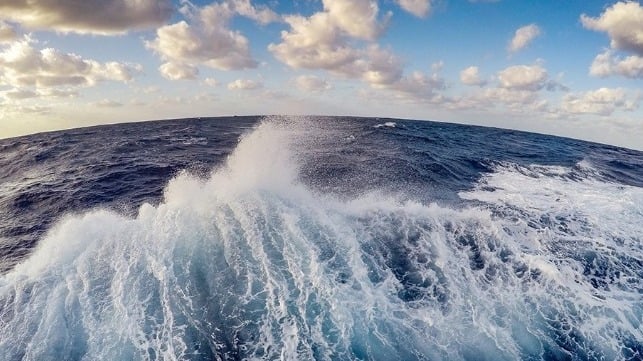Fast Facts: How Much Oxygen Comes From the Ocean?

Scientists estimate that 50-80 percent of the oxygen production on Earth comes from the ocean. The majority of this production is from oceanic plankton — drifting plants, algae, and some bacteria that can photosynthesize.
One particular species, Prochlorococcus, is the smallest photosynthetic organism on Earth. But this little bacteria produces up to 20 percent of the oxygen in our entire biosphere. That’s a higher percentage than all of the tropical rainforests on land combined.
Calculating the exact percentage of oxygen produced in the ocean is difficult because the amounts are constantly changing. Scientists can use satellite imagery to track photosynthesizing plankton and estimate the amount of photosynthesis occurring in the ocean, but satellite imagery cannot tell the whole story. The amount of plankton changes seasonally and in response to changes in the water’s nutrient load, temperature, and other factors. Studies have shown that the amount of oxygen in specific locations varies with time of day and with the tides.
It’s important to remember that although the ocean produces at least 50 percent of the oxygen on Earth, roughly the same amount is consumed by marine life. Like animals on land, marine animals use oxygen to breathe, and both plants and animals use oxygen for cellular respiration. Oxygen is also consumed when dead plants and animals decay in the ocean.
This is particularly problematic when algal blooms die and the decomposition process uses oxygen faster than it can be replenished. This can create areas of extremely low oxygen concentrations, or hypoxia. These areas are often called dead zones, because the oxygen levels are too low to support most marine life.
NOAA’s National Centers for Coastal Ocean Science conducts extensive research and forecasting on algal blooms and hypoxia to lessen the harm done to the ocean ecosystem and human environment.
This article appears courtesy of NOAA's National Ocean Service and may be found in its original form here.
The opinions expressed herein are the author's and not necessarily those of The Maritime Executive.
